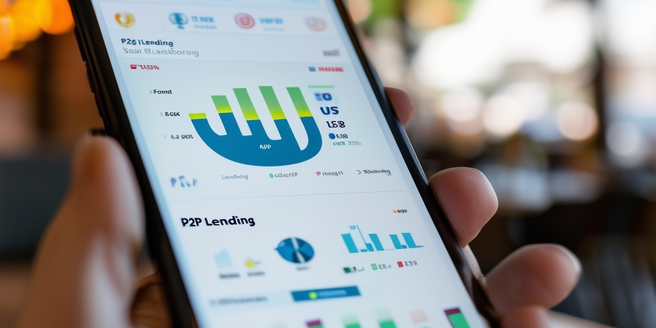Understanding Peer-to-Peer Lending Platforms
Peer-to-peer (P2P) lending platforms connect borrowers directly with individual lenders through an online system. These platforms operate without traditional financial institutions, using technology to streamline the lending process. Borrowers can access funds at potentially lower interest rates than conventional banks, while lenders can earn higher returns compared to savings accounts. This innovative financial model has gained significant popularity in recent years. However, it is important to be aware of the risks involved. Investors should diversify their loans to mitigate potential losses. It is crucial to understand the platform’s fee structure, borrower screening process, and loan default rates before getting started.
Benefits of Peer-to-Peer Lending for Borrowers
Borrowers benefit from P2P lending through quicker access to funds and more competitive interest rates. The application process is typically faster and more flexible than traditional banks, often requiring less documentation. This flexibility can be particularly advantageous for those with urgent financial needs. Moreover, the convenience of online platforms streamlines the entire borrowing experience. With P2P lending, borrowers also have the opportunity to connect directly with individual lenders. Borrowers with non-standard credit profiles may find P2P lending to be a viable alternative. Additionally, the transparency of fee structures and repayment terms can provide a clearer financial pathway.
How Investors Can Profit from Peer-to-Peer Lending
Investors in P2P lending can profit through higher interest rates compared to traditional savings or investment options. Diversification is key, as spreading investments across multiple loans can mitigate the risk of defaults. Regularly reviewing your investment portfolio ensures that your strategy remains aligned with your financial goals. Investors should thoroughly evaluate the platform’s credit assessment mechanisms and loan performance data. Conducting due diligence before investing can prevent potential losses. It’s also important to stay updated with changes in regulations that might affect the P2P lending market. Engaging with P2P lending allows investors to directly impact borrowers’ lives while potentially earning substantial returns.
Risks and Challenges in Peer-to-Peer Lending
Despite the benefits, P2P lending carries risks such as loan defaults, platform failures, and economic downturns. Investors face the risk of losing their principal in case of borrower default. It’s important to conduct due diligence on the platform and diversify investments to minimize risk. Additionally, investors should stay informed about changes in the regulatory environment. Regulatory changes and market volatility can also affect P2P lending dynamics. Understanding the platform’s reputation and credit evaluation process can help mitigate risks. As the landscape evolves, staying updated on these factors is crucial. Awareness of these challenges is essential for informed participation.
Regulations and Legal Aspects in Different Regions
P2P lending regulations vary significantly across regions. Some countries have stringent regulations ensuring investor and borrower protections, while others have more relaxed rules. Interestingly, this disparity can influence the attractiveness of P2P lending markets in different areas. Understanding the legal framework is crucial for participants in P2P lending, especially for those looking to expand internationally. For instance, what works in one country may not be viable in another due to differing legal standards. Inconsistent regulations can also make cross-border lending more complex. Compliance with local laws, taxation policies, and registration requirements must be considered. Regulatory changes can impact platform operations and investor returns, necessitating awareness and adaptability.
Future Outlook and Trends in Peer-to-Peer Lending
The future of P2P lending appears promising with advancements in technology and growing acceptance. Trends include the use of AI for better credit scoring, blockchain for enhanced transparency, and the expansion into developing markets. As more people seek alternative lending options, this sector is poised for considerable growth. With an increasing number of innovative financial products, consumer trust will likely see a significant boost. As P2P lending evolves, it may offer more personalized and inclusive financial solutions. Tracking industry trends and regulatory developments will be vital for stakeholders looking to leverage this growing field.


